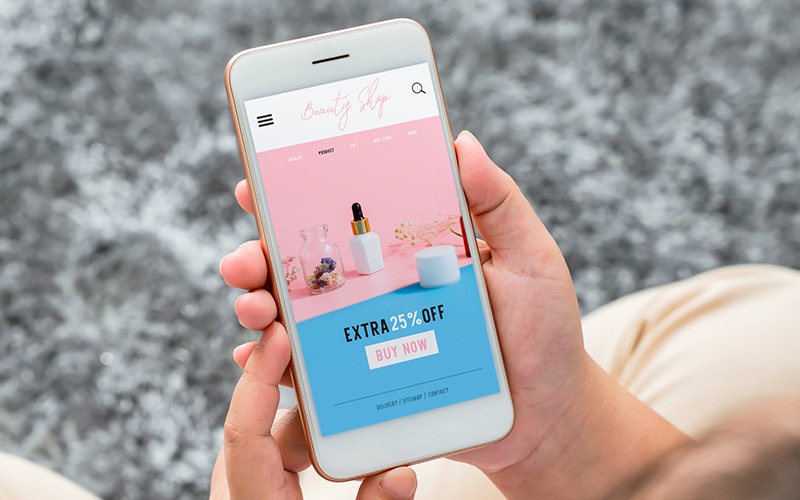Knowledge Institute Podcasts

-
Beyond the Salon: Reinventing B2B Beauty Commerce with Wella's Romolo Ganzerli
December 27, 2024
Insights
- Wella's digital transformation highlights the growing importance of personalized, seamless experiences in B2B interactions. By reimagining traditional B2B relationships, they position themselves as partners in their customers' success, rather than just suppliers.
- Wella’s step-by-step rollout of new platform functionalities ensures faster value delivery to customers. This agile approach also allows them to gather real-time feedback, refining the solution for continuous improvement.
"By listening to this podcast, you hereby acknowledge and understand that your personal data may be processed in the manner described in our Privacy Statement"

Samad Masood: Welcome to Ahead in the Cloud, where business leaders share what they've learned on their cloud journey. I'm Samad Masood, Infosys Knowledge Institute's Content Strategy Director, and today I'm joined by Romolo Ganzerli, the Global Head of B2B Commerce for Wella Company, the world-renowned professional beauty products firm. Romolo has been actively involved in a complete transformation of Wella, which at its core involve the implementation of a digital commerce platform for B2B customers, but which is also revolutionizing how Wella supports, engages and grows its customers' business. Welcome, Romolo.

Romolo Ganzerli: Thank you Samad, for the invitation and for the warm welcome.

Samad Masood: Of course. I'm really excited to learn more about this. So can I ask you first to begin maybe by setting some context, I don't think many people are aware that your industry is really driven by the beauty salons and the stylists themselves, but they've been facing a lot of challenges and changes in recent years, correct?

Romolo Ganzerli: First and foremost, running a salon has become less profitable than it used to be. It's never been the most profitable business, but in recent years, and especially light of the increase in utility costs, the increase in rent, and the decrease in client frequency as well as client average spend, we see profitability for salons shrinking, which has in turn triggered the second trend, which is a lot of salon owners and a lot of stylists that previously used to work for salons have decided to go freelancers, having their own clients. And with the support also of digital tools, they're essentially delivering services on the go.
But it changes essentially the way that we as a product manufacturer can or should get in touch with such individuals which are now more than ever scattered, fragmented and difficult also to identify. So to summarize, we see salons becoming less profitable, an increasing number of stylists which are becoming freelancers. And as they do so, we also see an increased amount of complexity, which is involved in managing the day-to-day operations.

Samad Masood: And I think the products that they use, they get quite locked into them, don't they? Because as you were mentioning, the chemistry element, they have their own customers. They like the coloring they're doing and the styles they're putting together. And changing from one brand or competitor brand to your brand involves quite a lot of experimentation. It's quite a difficult process I imagine.

Romolo Ganzerli: Indeed. Which is a good thing and a bad thing. It's a good thing if they're already using your product, but it's a bad thing if they're not because then the job to conversion, or what in digital marketing terms we would define as the cost per acquisition is very, very high. And the reason for that is, and I've learned it myself when I first started working in this industry, in order to go from color A to color B, not as simple as applying a hand of paint. There are several considerations that the stylist needs to make around the hair thickness, for example, the hair condition, the hair porosity, any previous treatment that was applied to hair.
So based on this parameters and based on the type of result that the client wants to get, the stylist needs to mix different colors together and different products together, which is not as straightforward, especially because that's where the whole mastery of the stylist sits. In parallel, it's also to be considered that different brands have different chemicals, different products have different chemicals, and therefore there is not a one-to-one correspondence between a Wella professional's product and a competitor product. So most like having to learn to read the table of elements once again from scratch.

Samad Masood: Yes. So that's a great setting of the scene. When you decided to modernize or when Wella decided to modernize and upgrade the e-commerce platform, talk us through what were the main objectives? What were you trying to achieve?

Romolo Ganzerli: First and foremost, we wanted to provide the customers with a simpler way to place their orders and to engage and manage the relationship with Wella. Second problem to be solved is the fact that we see customers using a very large number of tools and applications today with different intent and purposes. They manage, for example, a calendar to manage their appointments with their clients. They use Facebook or Instagram in order to manage their social media presence. They use Wella store to... Or their products for example. So we wanted to give them an opportunity to move across the different digital tools they are using in a more seamless way, which they're currently unable to do. And then last but not least, which links back to the first point, we wanted to also elevate the role of our sales representative and customer care agents to be not anymore only order takers, but to be really business consultants and to be able to provide more added value, tips, tricks, suggestions to the stylist in order to actually then be able to grow their business.

Samad Masood: So I'd also like to ask from a more technical perspective, what were the capabilities of the e-commerce platform that were useful for you to build out your vision for Wella?

Romolo Ganzerli: That's a very good question. I think if there is one that stands out is the ability to deliver a personalized experience based on the user. And by user we mean not only the actual stylist, because as we are in a B2B relationship, sometimes the B can be very different. It's either the stylist or the salon owner, or in some instances it's just the person that is taking orders or placing orders and works within the salon itself. So we had to think about delivering a personalized experience to each of these target groups also by market, because there is a different landscape within each market. So to that extent, building everything on a headless technology has enabled us to really be able to customize what we serve to whom based on user needs.

Samad Masood: So Romolo, your background is pretty unique in terms of coming from a more entrepreneurial and digital background into working into B2B. What advice would you give listeners in terms of improving your chances of success of bringing such a big transformative technology and change has been done at Wella?

Romolo Ganzerli: So you need to be also fine with the concept of done is better than perfect. You need to be also fine with the concept of launching something in order for it to get into the end user as soon as possible so that you can collect feedback on it and decide whether it is worth investing more money and more effort into making that solution a little bit better. And you will often realize that the solution that you had in mind is maybe not necessarily the solution that the customer needs, but the only way for you to be able to learn about it is by putting something in the end of users. It's important that there is an element of it which makes it exciting. And in our case, I think we were able to do that through the branding that we gave to the whole program.
So the whole program of digital transformation goes under the umbrella name of Wella One, which makes it easy for us to talk to customers about what is it that they're trying to achieve. And third, my last advice would be to always keep in mind the ecosystem thinking in everything that you do. I think one of the goals that we have as part of this program is to provide our customers with as many tools as we can, and that they can use in their daily operations so that they can really acknowledge the value of being a Wella customer beyond the simple supply of hair color products.

Samad Masood: What would you say is important when you're working with an external vendor and trying to do this kind of lean, agile, more entrepreneurial approach to digital transformation? What are the things that people in your position should be considering?

Romolo Ganzerli: So I think the main one would be to not underestimate the amount of complexity that is involved in any digital transformation program, especially when you approach it for a multinational firm, which has a very complex IT setup. It's never going to be as easy in most cases. So it's helpful to be able to rely on a partner that can allow you to tap into different resources with different skill sets based on what the project needs. Until you really get to the nitty-gritty, you're not going to be able to get full visibility on the ask, which is why having a partner that allows you to tap into resources a bit on demand becomes very helpful so that you don't have to distribute the project across too many partners.

Samad Masood: Thank you, Romolo. This has been a really incredible insight into what is a fascinating industry. Can you just tell us the platform, is it already being used by customers? Has it launched? What stage is it at now?

Romolo Ganzerli: Yes, we did launch, and as I was mentioning earlier, we are really taking it step by step, meaning that every time a new piece of functionality is available, we roll it out. So we are not waiting for the full thing to be built in order to start delivering value to our customers. So it has been in the hands of customers for at least 12 months now with a new e-commerce experience, which is available on wellastore.com with a new mobile app, which has also some exclusive in-app functionalities. And we are planning then to continue releasing additional functionalities and tools over the course of the first half of 2025 in order then to also enable a big bang launch towards those that might not have heard about Wella company yet.

Samad Masood: Could you tell me what value you've seen come back so far from those that are using it?

Romolo Ganzerli: Of course. And I think if we go back to the original objectives, we talk about productivity for us as Wella company, but also for the stylist. And we can see indeed that there have been some productivity gains in the way that our sales force and our internal team operates. So now they have more time to focus on more added value tasks, which in turn translate into growth for our accounts. And in parallel on the customer side, we have also seen that since they're using digital tools, they are buying more than what they were buying previously, which gives us confidence that there is a positive effect in the sellout as well, which is translating then into an higher selling for our product. So the first numbers are indeed very promising and give us the confidence that we're hopefully on the right track.

Samad Masood: Well, we wish you and Wella and your customers the best in the future with this new platform.

Romolo Ganzerli: Thank you.

Samad Masood: Thank you so much for taking the time to speak with us.

Romolo Ganzerli: Thanks for the opportunity.

Samad Masood: This podcast is part of our collaboration with MIT Tech Review, in partnership with the Infosys Cobalt. Visit our content hub at technologyreview.com to learn more about how businesses across the globe are moving from cloud chaos to cloud clarity. Be sure to follow ahead in the cloud wherever you get your podcasts. You can find more details and our show notes and transcripts at infosys.com/iki. That's in our podcast section. Until next time, keep learning and keep sharing.
About Romolo Ganzerli

Romolo currently serves as the Global Head of B2B eCommerce at Wella Company, where he oversees the organization’s flagship online store, Wellastore. Trained as an engineer, he later transitioned into entrepreneurship, marketing, and eCommerce. In 2015, he launched MammaPack, the first online grocery platform catering specifically to Italians living abroad.
Prior to joining Wella Company, Romolo worked in the Brand Management division at Procter & Gamble and gained experience in Management Consulting and Venture Capital. In addition to his corporate responsibilities, he actively advises startups and is a Faculty Member at the Geneva Business School, where he teaches Entrepreneurship and Lean Startup Methodology.
On LinkedIn
About Samad Masood

Samad Masood is Associate Vice President for Content Strategy at the Infosys Knowledge Institute. He has spent most of his 25-year career either analysing or writing about the enterprise IT services and consulting industry but has also had long stretches of client-facing digital strategy and consulting work. At Infosys he has developed the research agenda and strategy for the Knowledge Institute, and before this he developed Accenture’s start-up innovation practice in the UK, launching a series of start-up accelerators in the Fintech, Retail, and Health sectors. His career started as a business and tech journalist at Risk, Information Age and Computer Business Review magazines, before moving into market research and consulting with firms such as Computer wire, Data monitor and Ovum.
On LinkedIn
- “About the Infosys Knowledge Institute”
- MIT Technology Review
- Wella Company
- Wellastore
Mentioned in the podcast

